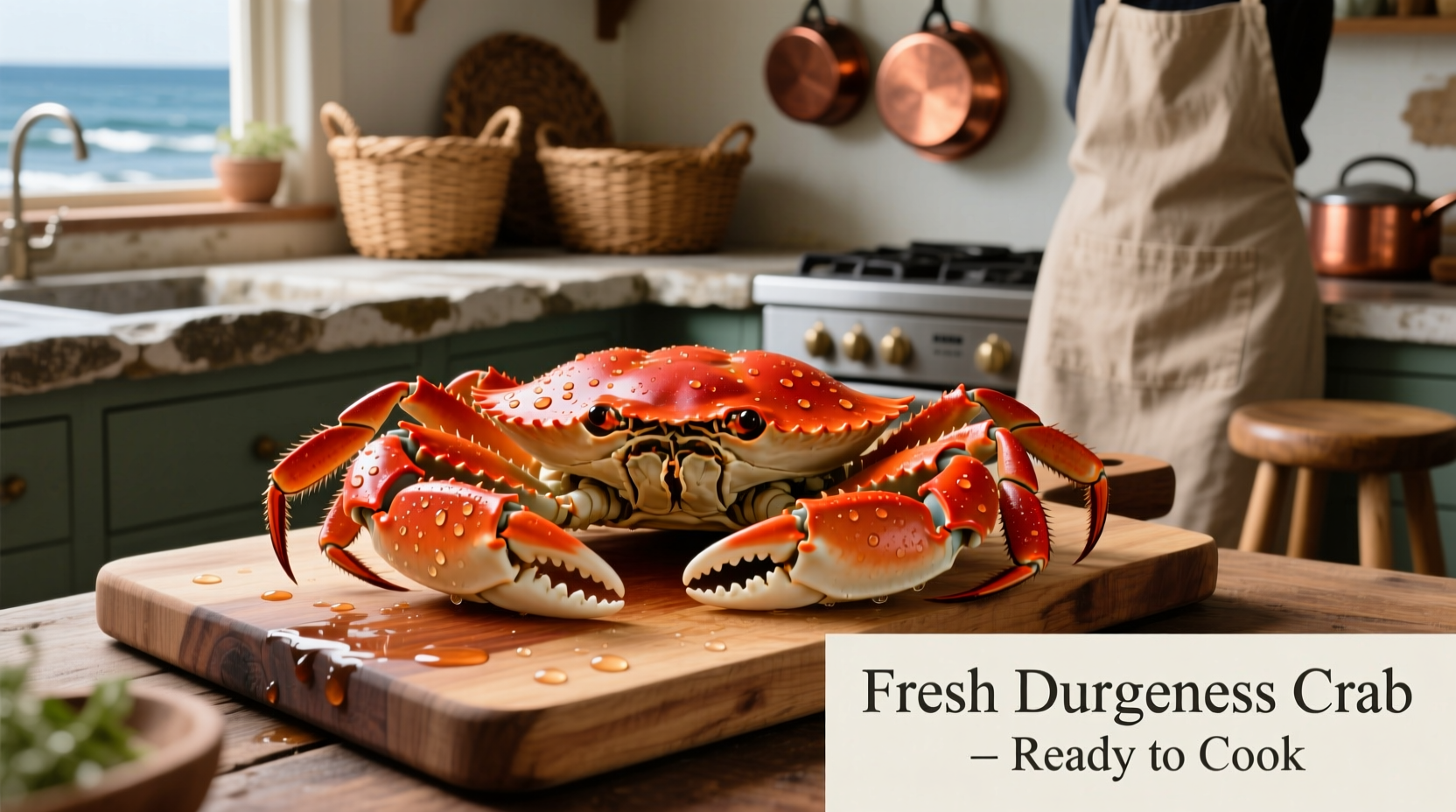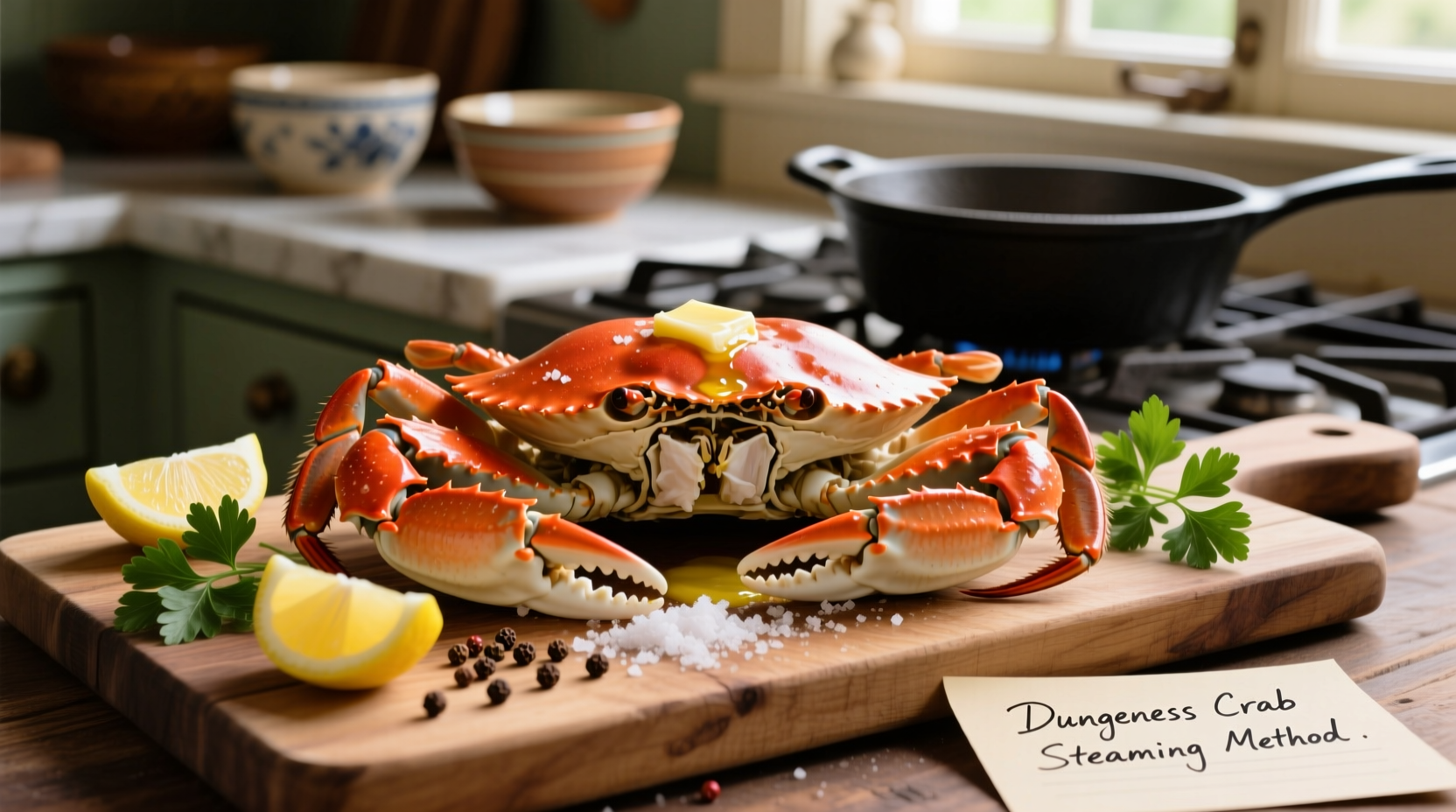The best way to cook Dungeness crab is by boiling or steaming live crab for 12-18 minutes depending on size. Boiling in seasoned water preserves flavor while steaming yields slightly more delicate meat. Always cook live crab for optimal texture and safety - never use dead or previously frozen crab for the best results.
There's nothing quite like the sweet, delicate flavor of perfectly cooked Dungeness crab. Whether you've just returned from a fishing trip or picked up fresh crab at your local market, knowing exactly how to cook Dungeness crab makes all the difference between tender, flavorful meat and rubbery disappointment. In this guide, you'll learn three professional methods that guarantee restaurant-quality results every time.
Why Dungeness Crab Deserves Special Attention
Dungeness crab (Metacarcinus magister) stands apart from other crab varieties with its sweet, delicate flavor and tender meat. Found along the Pacific coast from Alaska to California, these crabs reach peak quality during their November to June season. According to NOAA Fisheries data, Washington and California account for over 80% of the U.S. Dungeness crab harvest, with the highest quality typically available December through April.
| Cooking Method | Best For | Cooking Time | Water Ratio |
|---|---|---|---|
| Boiling | Maximum flavor infusion | 12-18 minutes | 1 cup salt per gallon |
| Steaming | Delicate texture preservation | 15-20 minutes | 2 inches water |
| Grilling | Smoky flavor enthusiasts | 8-10 minutes | N/A |
Essential Preparation Steps Before Cooking
Proper preparation ensures both safety and optimal results when learning how to prepare fresh Dungeness crab. Never attempt to cook dead crab - it becomes toxic within hours. When selecting live crab, look for active movement and a heavy feel for its size.
Safety first: The FDA recommends wearing thick gloves when handling live crab to avoid painful pinches. For humane preparation, chill live crab in the freezer for 15-20 minutes until dormant before cooking. This method, endorsed by the Monterey Bay Aquarium's Seafood Watch program, minimizes stress for the crab while ensuring safety for the cook.

Step-by-Step Boiling Method: The Classic Approach
Boiling remains the most reliable method for how to cook Dungeness crab with maximum flavor. Follow these professional steps:
- Prepare a large stockpot with enough water to cover crabs completely
- Add 1 cup of coarse salt and 1/4 cup vinegar per gallon of water
- Bring to a rolling boil before adding crab
- Gently plunge live crab headfirst into boiling water
- Cook 12-18 minutes (12 for 1-1.5lb crabs, 15 for 1.5-2lb, 18 for 2lb+)
- Immediately transfer to ice water for 5 minutes to stop cooking
The vinegar helps prevent meat from sticking to the shell. For enhanced flavor, add bay leaves, garlic, and black peppercorns to the boiling water. This dungeness crab boiling time formula works because crab continues cooking after removal from heat.
Steaming Method: Preserving Delicate Flavor
Steaming yields slightly more delicate meat with less water absorption. Ideal for steaming dungeness crab recipe perfection:
- Use a large pot with a steamer basket and 2 inches of water
- Add lemon slices, garlic, and bay leaves to the water
- Bring water to a boil before adding crab
- Stack crabs shell-side down in the basket
- Cover tightly and steam 15-20 minutes until shells turn bright orange
- Check doneness by ensuring the apron flap pulls away easily
According to University of California Cooperative Extension research, steaming preserves up to 15% more natural moisture in the meat compared to boiling, resulting in noticeably more tender crab. This method works best when you want the pure crab flavor to shine through without water absorption.
Grilling Option: For Adventurous Cooks
For those wondering how long to cook live dungeness crab on the grill, this method adds smoky complexity:
- Clean and halve cooked crab (boiled for 5 minutes first)
- Brush with melted butter and garlic mixture
- Grill shell-side down over medium heat for 8-10 minutes
- Turn and grill meat-side down for 2-3 minutes
- Serve immediately with lemon wedges
This two-step approach (brief boil followed by grilling) ensures food safety while adding distinctive flavor. The FDA confirms that this method reaches the necessary 145°F internal temperature required for safe seafood consumption.
Serving Your Perfectly Cooked Dungeness Crab
The moment you've waited for! Serve your fresh dungeness crab cooking instructions masterpiece with these professional touches:
- Dipping sauces: Classic drawn butter with lemon, garlic aioli, or spicy cocktail sauce
- Cracking technique: Remove claws first, then flip crab and remove apron before cracking the body
- Presentation: Serve on a bed of ice with lemon wedges and fresh parsley
- Storage: Refrigerate leftovers within 2 hours; consume within 2 days
For the best how to serve cooked dungeness crab experience, provide crab crackers, small forks, and plenty of napkins. The sweetest meat comes from the claws and the body's center sections.
Troubleshooting Common Cooking Issues
Even with perfect dungeness crab cooking temperature control, problems can occur:
- Meat sticking to shell: Usually from undercooking - ensure proper boiling time
- Rubbery texture: Result of overcooking - use timer and remove promptly
- Bitter flavor: Indicates the crab was dead before cooking - always use live crab
- Watery meat: More common with boiling - try steaming next time
Remember that larger crabs require additional cooking time, but never exceed 20 minutes total or the meat will become tough. The perfect dungeness crab seasoning tips include keeping it simple - the crab's natural sweetness needs little enhancement.











 浙公网安备
33010002000092号
浙公网安备
33010002000092号 浙B2-20120091-4
浙B2-20120091-4